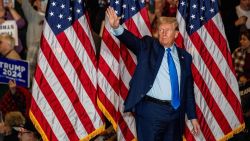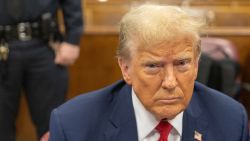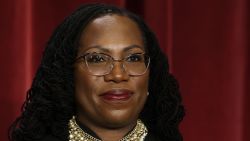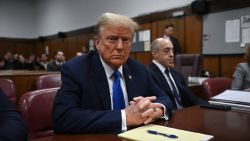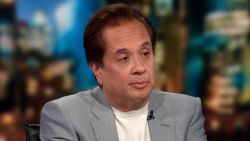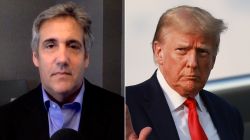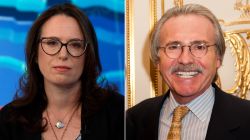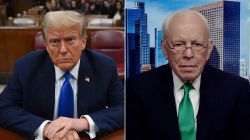A massive operation to detain and deport undocumented immigrants.
A purge of the federal workforce of anyone deemed disloyal.
Wielding the power of federal law enforcement against political enemies.
As he seeks a return to the Oval Office, former President Donald Trump and his allies have promised a sweeping transformation of the federal government that would wield the executive branch’s power in radical and unprecedented ways.
The agenda they are crafting would put into practice Trump’s hardline views that he has publicly expressed during his latest campaign for president and will almost certainly face a series of legal and political challenges.
Behind the scenes, Trump-aligned outside groups have been working on crafting executive orders, studying the Constitution in anticipation of legal challenges, and looking for work arounds to give Trump the power to invoke some of these policies on day one should he regain power.
These outside loyalists are keenly aware of the chaos and disorganization of Trump’s first term. Now at the helm of a number of conservative groups in Washington, they are waiting in the wings, helping structure a plan that would have the wheels in motion on implementing the sweeping agenda.
Project 2025, a transition project run by the conservative think tank the Heritage Foundation, has brought many of these groups together to “pave the way for an effective conservative administration.”
The efforts by outside groups to map out the legal and policy specifics of a second Trump term were recently met with some pushback from Trump’s official campaign apparatus.
“The efforts by various nonprofit groups are certainly appreciated and can be enormously helpful. However, none of these groups or individuals speak for President Trump or his campaign,” campaign advisers Susie Wiles and Chris LaCivita wrote in a statement.
Still, the broad contours of Trump’s agenda have been laid out by the former president himself on the trail as well as in a series of videos and releases put out by the campaign.
Trump’s campaign has recently brought on policy-focused hires who will help craft his policy messaging and eventually look at proposals from various conservative groups. The goal is to have executive orders prepared – on everything from immigration to the removal of government protections for civil servants – for Trump to sign on day one of a potential second administration.
Using the Justice Department for revenge
Trump’s plan includes asserting more White House control over the Justice Department, an institution the former president has said he would utilize to seek revenge on his critics, including former allies.
“I will appoint a real special prosecutor to go after the most corrupt president in the history of the United States of America, Joe Biden, and the entire Biden crime family,” the former president said in June after his arraignment in Florida. “I will totally obliterate the Deep State.”
During a recent interview with Univision, Trump took it a step further.
“If I happen to be president and I see somebody who’s doing well and beating me very badly, I say go down and indict them,” he said.
Despite the long-standing tradition of DOJ and several other smaller government agencies operating independently, those in Trump’s orbit have referred to these agencies as an “administrative deep state” and “rogue fourth branch of government” that they believe should answer to the president as part of the executive branch.
In videos and speeches, he has laid out his plans to gut the current Justice system by firing “radical Marxist prosecutors that are destroying America.”
It’s part of a broader effort that would break down legal restrictions and traditional protections against political interference and give the White House more authority to install ideological allies throughout the federal government.
If Trump is elected next year and pursues the blueprint his campaign and allies are now developing, legal experts say it would lead to years of legal battles and political clashes with Congress over the limits of presidential authority.
“To some degree we would be in uncharted territory,” Stephen Vladeck, a law professor at the University of Texas School of Law and CNN legal analyst, said. “A lot of the relevant constraints have been norms and not rules. Those norms were enforced not by litigation, those norms were enforced politically. The reality of a second Trump administration is going to be a lot of novel litigation about these kinds of abuses of what were historically norms constraining the executive.”
Purging the federal bureaucracy
Part of Trump’s plans would reclassify tens of thousands of civil service workers — who typically remain on the job as presidents and their administrations change — as at-will employees, a move that would make it much easier to fire them.
Trump said in a March video that he would sign an executive order doing so, which he said would allow him “to remove rogue bureaucrats.” He vowed to “wield that power very aggressively.”
“We will clean out all of the corrupt actors in our National Security and Intelligence apparatus, and there are plenty of them,” Trump said. “The departments and agencies that have been weaponized will be completely overhauled so that faceless bureaucrats will never again be able to target and persecute conservatives, Christians, or the left’s political enemies.”
Privately, Trump has blamed some of these career government employees as the reason some of his policy proposals were not enacted quickly during his first term and called for loyalists with similar ideology to be installed in every area of government.
Part of Project 2025’s objective is to build out a database of vetted potential conservative staffers that an incoming Republican president could draw from, which a source referred to as “a conservative LinkedIn.” The database, which is being managed by tech company Oracle, has seen thousands of applications and has hopes to have thousands of vetted prospects for a future administration in place for a potential transition.
While a source familiar with the program said there was currently no FBI level background check or loyalty test for applicants, resumes are being marked with potential “red flags” that allow for a new administration to draw their own conclusions about possible hires.
Hardline immigration policies
Trump is also planning a widespread expansion of his former administration’s hardline immigration policies if elected in 2024 that would restrict both legal and illegal immigration.
“Stopping the invasion at our southern border is an urgent national security necessity and one of President Trump’s top priorities. For that reason, he has laid out – in his own speeches and Agenda 47 platform – by far the most detailed program for securing the border, stopping illegal immigration, and removing those who should never have been allowed into our country in the first place,” a spokesperson for the Trump campaign said in a statement to CNN.
The plans would include rounding up undocumented immigrants already in the US and placing them in detention camps to await deportation, a source familiar with the plans confirmed to CNN.
The proposals would necessitate the building of large camps to house migrants waiting for deportation and the tapping of federal and local law enforcement to assist with large-scale arrests of undocumented immigrants across the country.
Should Congress refuse to fund the operation, Trump could turn to a tactic used in his first term to secure more funding for a border wall – redirecting funds from the Pentagon, the source confirmed.
Trump has publicly said he wants to revive many of his first-term immigration policies to restrict both legal and illegal immigration — including reinstating and expanding a travel ban on predominantly-Muslim countries and bringing back a Covid-era policy, known as Title 42, to further restrict immigration into the country, though this time it would be based on the assertion that migrants carry other infectious diseases.
Trump also pledged to “terminate all work permits for illegal aliens and demand that Congress send me a bill outlawing all welfare payments to illegal migrants of any kind.”
The former president also warned of caravans coming from Mexico to the US border, and vowed to prosecute groups and charities that he claimed facilitated the large-scale unlawful immigration.
A sweeping domestic agenda
In a second term, Trump also has designs on drastically reshaping the lives of Americans when it comes to policies affecting law enforcement, trade and the social safety net.
The former president has said he would require local law enforcement agencies to use the controversial police practice of stop-and-frisk in order to receive some Justice Department funding. He’s also suggested he would deploy the National Guard to cities dealing with high levels of crime.
Another policy aimed at combating homelessness calls for the creation of “tent cities” on “inexpensive land” that would be staffed by health care workers, giving people a choice between relocating or facing jail time.
When it comes to the economy, Trump has floated across-the-board tariffs on all imported goods, signaling an aggressive approach to trade policy, with a focus on China.
“When companies come in and they dump their products in the United States, they should pay, automatically, let’s say a 10 percent tax,” Trump said during an interview with Larry Kudlow on Fox Business.


